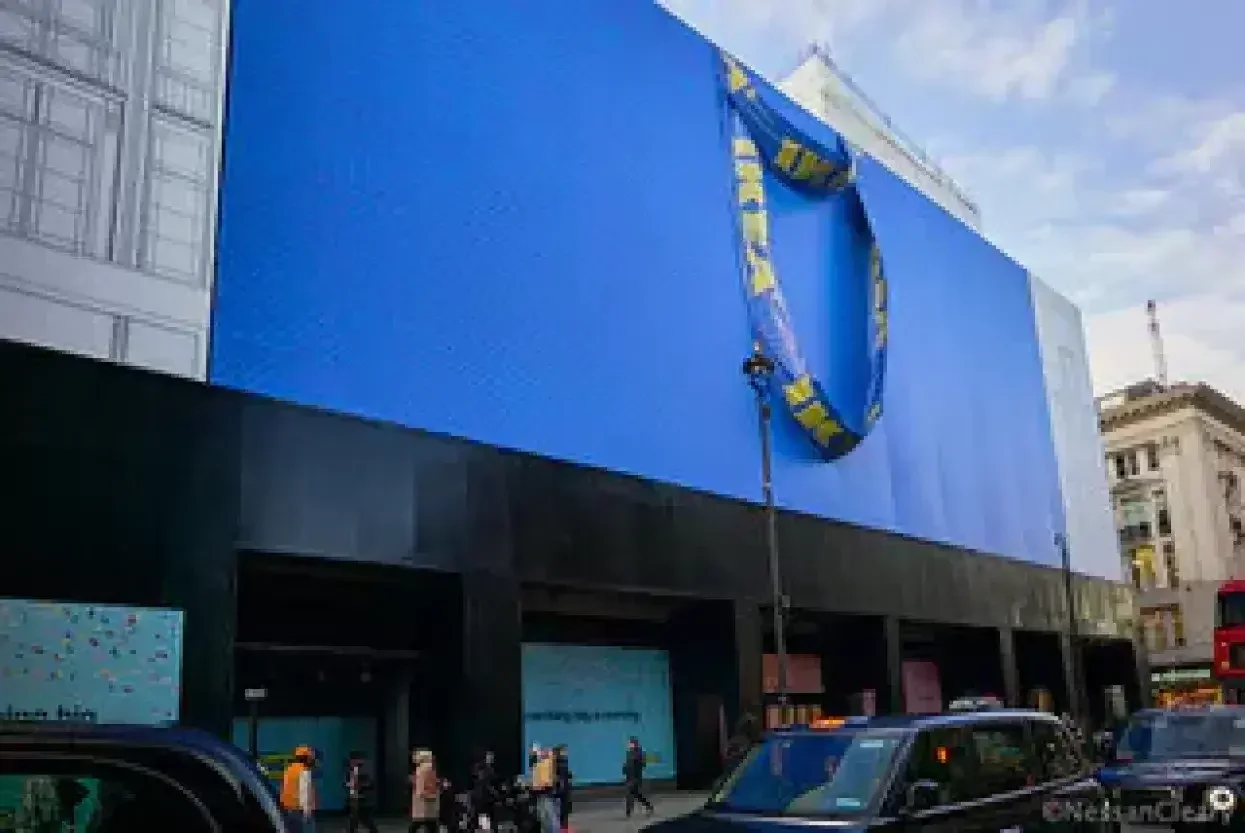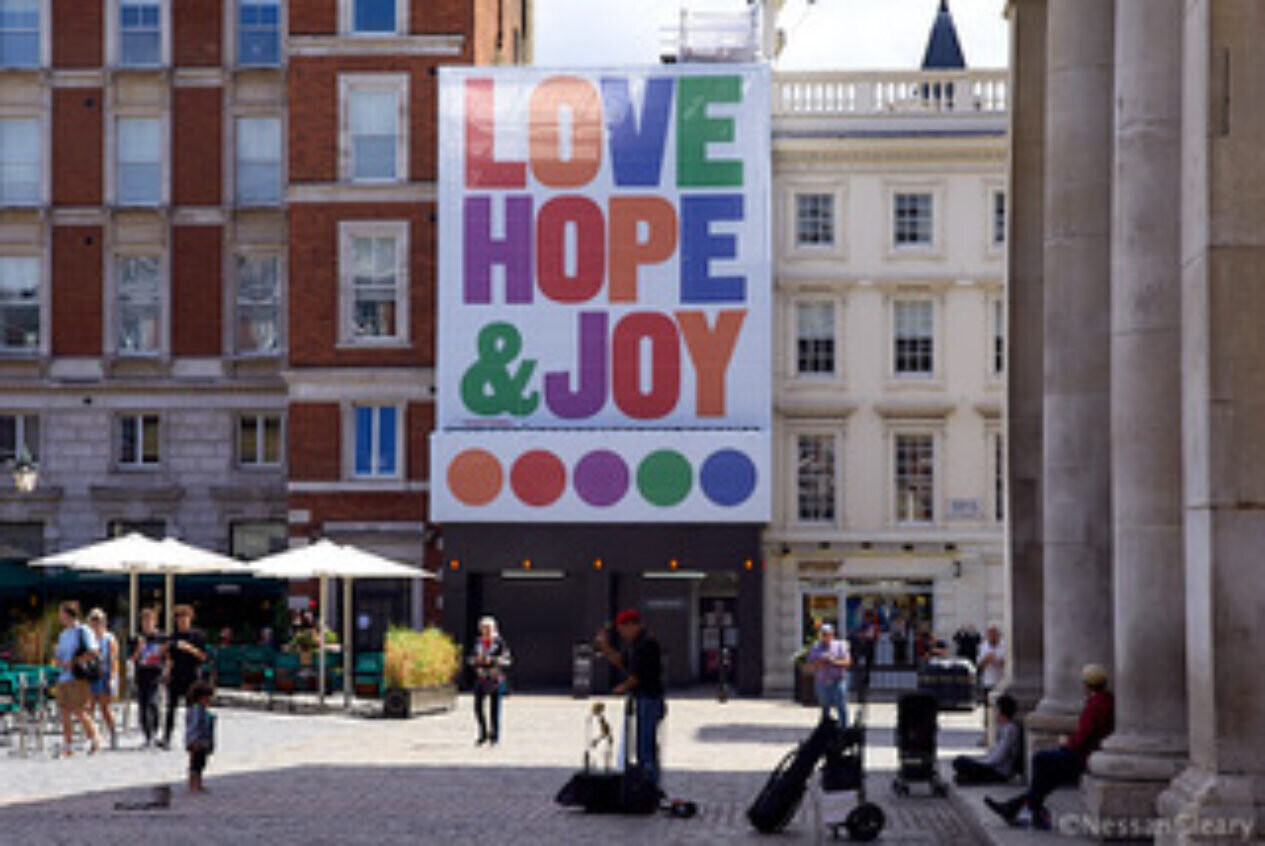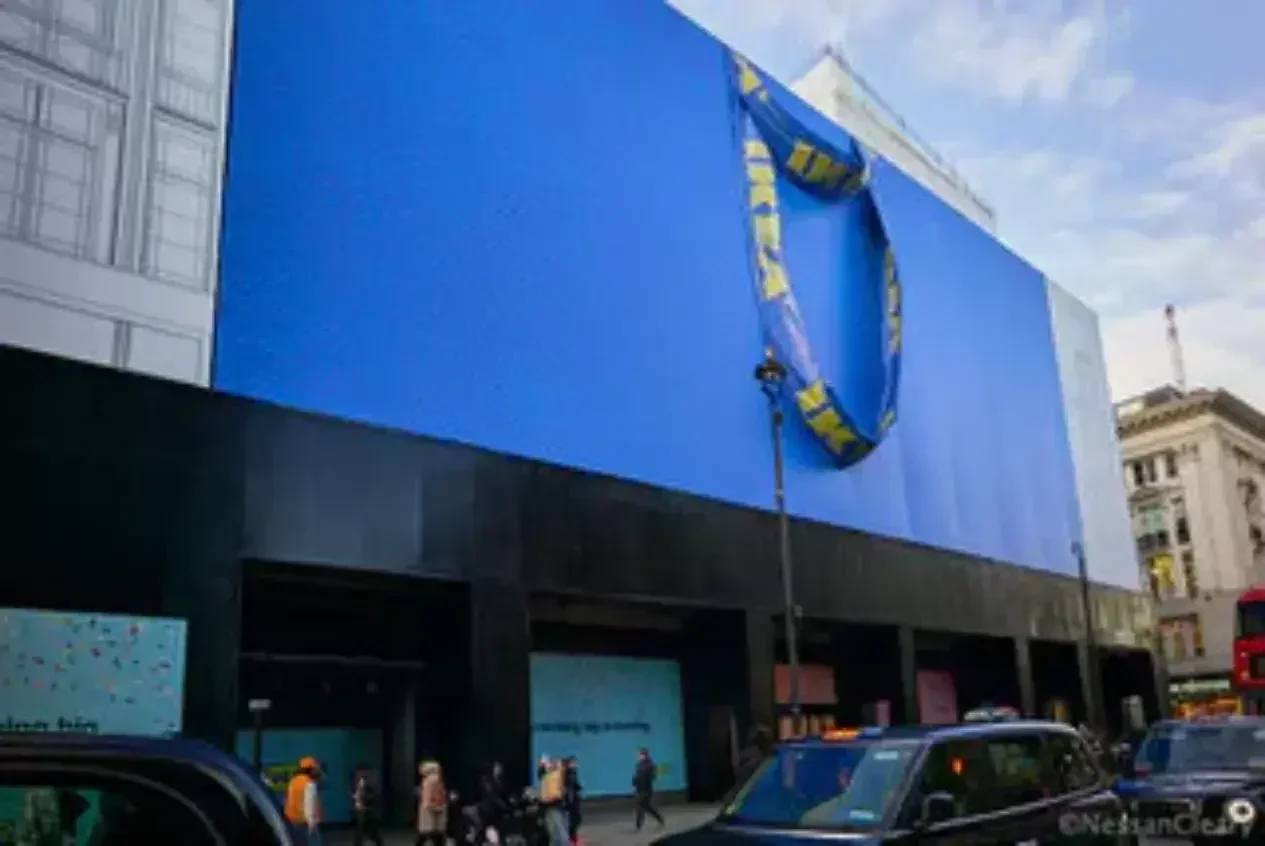
Nessan Cleary shares the 3 key types of building wraps and how the choice of wrap is dependent on the type of building work required. The printing of the wraps is usually quite straightforward however quoting the wraps can prove challenging.
The construction industry has embraced the concept of adding large format graphics to building projects, both for renovations and for new builds, creating a niche specialism within the display graphics market. These graphics can help turn a building site from an ugly mass of scaffolding into an eye-catching statement, which in turn limits some of the impact from the construction on the surrounding area.
These wraps offer a number of practicable benefits to the builders. Firstly, they can help improve the overall safety and security around the site, limiting access to the site. They provide good protection to the construction workers from the worst of the wind and rain. At the same time these wraps can curb the worst of the dust, debris and noise from affecting the surrounding area and limit the risk that the disruption from the construction might tarnish the reputation of the finished project.
The graphics can go a long way to helping with this. The display could include information about the building project, such as the date when the construction will finish, or the different stages that it might involve. Typically these graphics include a high resolution photo of a building that is being renovated or an artists impression of what a new building will look like. This can reassure local residents that the finished project will be a valuable addition to the local area and not a hideous eyesore. Alternatively the graphics can provide useful local information, such as a map of the area. And of course the building wrap can also be seen as a huge, and largely free, space for advertising for the owner of the site, albeit that this may be subject to local planning consent.
However, a building wrap is more than just another print job. There are a number of different stages that have to be mastered to oversee a complete project from design through to decommissioning. This should start with a complete site survey to understand any specific requirements of the location, including traffic flows and weather patterns, and to measure the exact sizing that will be needed. You’ll also have to liaise with the construction firm and secure any local government planning consents and permits, both for the graphic itself and the installation and eventual removal.
There are three main types of building wraps, with the choice coming down to the type of building work being done, and the aim of the graphics project overall. The simplest approach is a wire frame, where a large square or rectangular frame that might cover the front facade of a building is installed. The graphic is then hung within this frame, and tied tightly to the frame which is clearly visible beyond the edges of the material.
This building wrap on a project in Central London spreads a welcome message.
©Nessan Cleary

Then there is a second approach, where the graphic is wrapped around the frame and clamped to pull the graphic taut, so that the frame is completely hidden. These frames are generally built out of a standard scaffold system so that they match the size and shape of the building, and can extend all the way around the building.
In both cases, the frame has to be designed to handle the expected wind load and the graphic should be finished with heavy duty eyelets and welds capable of withstanding the likely weather conditions over the required period. Ideally, the frame for the graphic should stand separate from the construction scaffold, typically with a 300mm offset. The tubes from the construction scaffolding should be cut and capped to reduce the risk of a tear in the graphic from the wind blowing it against the scaffolding. It’s usually best to install this frame first before printing so that the graphic can be produced in exactly the right size.
There is one further type of building wrap, the vinyl wrap, where printed vinyl is applied directly to the building. This kind of wrap is mainly used to mask work being done inside a building. This could be a wrap on the outside of a retail unit to cover up work being done on the inside, advertising that a new business is starting up. This requires particular care to be taken with windows and doors and might mean using a material such as Contravision to let light through the graphic for those working inside the store.
Here, a building is being converted into a new Ikea store in central London, hidden behind a wrap designed to look like an Ikea bag.
©Nessan Cleary

After the frame, the biggest decision is going to be the choice of substrate. The material has to satisfy a number of different requirements. These include being lightweight, which is particularly important given the size of these prints, but also waterproof and able to withstand the worst of the weather. The graphic may have to last many months, or even several years, since building wraps are generally fairly expensive and so more likely to be used on bigger and longer lasting projects. At the same time, the material also has to allow enough light and air to filter through to create the best conditions for the construction workers. You may also have to treat the material for flame retardance.
There’s a good range of suitable materials, including PVC and vinyl but the most common is PVC mesh, all of which can be printed with UV-curable inks. Another option is to use a polyester fabric mesh, which can be a more environmentally-friendly solution though may not last as long as PVC. This material can be printed with a dye sublimation process using water-based inks. Regardless of the print process, the printing is generally done on 5m wide machines for productivity and in order to minimise the amount of stitching needed to create a large flat surface.
This brings us neatly to the final part of a building wrap project – how to dispose of the wrap after the building is finished and the graphic is no longer needed. This largely depends on the material used and usually comes down to a choice between landfill or incineration, both of which will increase the overall carbon footprint of the project. But a better, more environmentally-friendly option, is to print onto PVC-free mesh which can be recycled. There are several PVC-free materials to choose from. Kavalan, for example, has a biodegradable coating to help it decompose and can also be incinerated to generate electricity.
Building wraps can be challenging to quote, depending on the size of the overall project. The printing is generally straightforward and can usually be calculated on a simple cost per square metre basis. But you will also have to consider all the other factors, from securing planning permission and installation through to decommissioning.